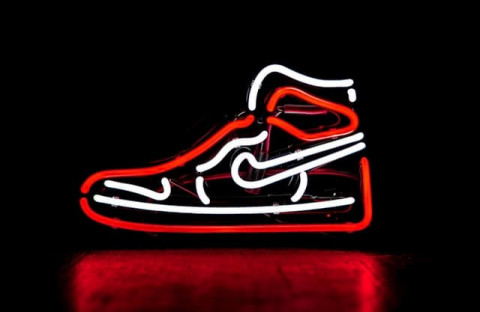
9 min
3
10.04.2022

One of the most important approaches to understanding the nature of crime is called the labeling theory. Its understanding is fundamental for those who wish to receive profound knowledge in many fields, including sociology and criminology. In this article, we share everything you need to know about the fascinating labeling theory.
Labeling Theory Overview: Definition and Authors
Proponents of the theory of labels interpret deviant behavior not as a set of traits inherent in individuals or groups but as a process of interaction between deviants and non-deviants. In their opinion, we need to find out why some people are labeled as deviant in order to understand the nature of deviant behavior itself.
As a rule, such labels are imposed by people who represent the force of law or who are empowered to apply to others the well-defined rules of conventional morality. Thus, labels denoting categories of deviation are a manifestation of the structure of power in society.
What Influenced the Labeling Theory?
Based on criminological literature, the labeling theory had influences from the following sociologists and their works:
1. Frank Tannenbaum’s “The Dramatization of Evil”
The Dramatization of Evil states that when an individual is described as a criminal, he eventually becomes one.
2. Émile Durkheim’s “Suicide”
Émile argues that what’s considered a crime and delinquency is actually those that outrages the society and not those that simply violate penal codes.
The modern labeling theory is by George Herbert Mead, John Dewey, W.I. Thomas, Charles Horton Cooley, Herbert Blumer, and others, with Howard Becker considered as the most prominent one of all. It focuses on the reaction of society to the criminals’ behavior.
The labeling theory states that society’s response to these behaviors determines whether that behavior should have a deviant label or not. The labeling theory falls under the same category as symbolic interactionism, differential association, and control theory.
3. Howard Becker and the Labeling Theory
Howard Becker is an American sociologist who produced “Outsiders” in 1963 that talks about the Sociology of Deviance. He argues that being “deviant” is not inherent in a person, but rather, it’s built-in to society.
Howard believes that society is divided into social groups, and those in power have control of the society. Therefore, they are the ones who make the rules as to what’s considered deviancy and mold the criminal justice system as to the definition of who are deviants.
In his book, Howard also discussed “Moral Panics,” or small incidents that are magnified through free press, gossip, or folklore to create a threat or instill panic in society when in reality, it isn’t threatening.
Labeling Theory Environment Examples
Example 1: Same-Sex Marriage
Ian and Christian are males who love each other and want to get married. If they live in Massachusetts, they will have no problem claiming a marriage license as same-sex marriage is legal in that state. Them being a same-sex couple is not considered to be a deviant role. The community where they live is likely to support and treat it as any other marriage.
However, if Ian and Christian live in Barbados, they will be penalized for “Buggery or Unnatural and Indecent Acts” and will be imprisoned for life. The community will despise them, and they can even resort to shaming. They will be labeled “deviants.”
Example 2: Marijuana
Ashley has severe anxiety, and she’s aware of the medicinal properties of marijuana. So she decides to purchase some medical weed.
If she lives in Illinois, where the use of medical marijuana is legal and decriminalized, she will have no problem purchasing and using it. The people around her won’t find it a deviant act.
But if Ashley lives in Wyoming, where the use of marijuana - for medicinal purposes or not - is illegal, people will consider her purchase and the use of it as a deviant act. They will label her as a deviant since her behavior violates the social norms.
How Does the Labeling Theory Explain Deviance?
Erving Goffman’s theory of dramaturgy explains that people use impression management to play their part in society. Goffman believes an individual is an actor, and society is the stage.
Deviance is when the actor suddenly acts out of character. It’s defined as behaviors that are out of the normal activities in society.
According to Erwin Lemert’s “Societal Reaction,” a person goes through two phases of social deviance:
- Primary Deviance is when an individual violates the social norms or exhibits deviant behavior. But it doesn’t have any long-term consequences, and the person’s perception of themselves doesn’t change.
- Secondary Deviance happens when a person is labeled as a deviant by society because of the deviant acts done. Slowly, the person’s self-concept changes as well. This label will become their “Master Status” or their primary character.
The labeling theory explains that an individual succumbs to his deviant identity when he’s labeled as such by society. When someone’s labeled a “criminal,” he slowly thinks of himself as such and is likely to continue his criminal behavior.
The Importance of the Labeling Theory
Labeling theory argues that no act is intrinsically criminal, meaning that no action is always criminal in nature. Therefore, this theory is often used to understand criminal behavior or those that are considered deviants.
What is considered a deviant act? It is those that in power choose to classify actions as such through law-making. These are dependent upon the interpretation of those who enact those laws, like the courts and the police.
This theory explains that deviance is not an individual’s or group’s character but instead the result of how criminality is interpreted by society.
What are the Existing Limitations of the Labeling Theory?
Those who critic this theory say that the labeling theory:
- Ignores differences in socialization
- Disregards contrasts in opportunities
- Fails to set attitudes aside
Labeling Theory and Mental Illness
Mental health has been in the limelight in recent events as people realized its importance, creating a more welcoming attitude by the family members, friends, and employers to the labeled individual who’s suffering from mental disorders.
Walter Gove’s paper titled “Labeling Theory’s Explanation of Mental Illness: An Update of Recent Evidence” started with sociologists’ failure to factor in the developments in psychiatry, creating the conflict between the use of labeling theory to explain mental illness versus its psychiatric definition.
Gove also said that even if labeling theorists argue that those labeled as “mentally ill” are not different from the others who are not labeled, evidence suggests that there is a genetic component differentiating them.
Labeling Theory in Criminology and Sociology
Social sciences play an important role in the labeling theory.
For example, some can explain juvenile delinquency as an aftermath of negative connotations to events or words that are usually seen in a positive light. The word “home” can mean warmth and family to a non-deviant juvenile. But if the juvenile has a bad relationship with his family, “home” changes its meaning altogether.
This interactionist perspective helps criminologists understand an individual’s actions and reactions.
Criticism of the Theory
The labeling theory does not seem to stop being a hot topic, attracting debates and criticism.
Strengths of the Labeling Theory
Those who support the theory see its strengths in:
- Making it easier to understand deviant behavior. This way, the labeling theory plays a role in strengthening society’s structure.
- Helping make knowledgeable predictions. For instance, an individual who has been labeled a felon can’t be part of a jury and can’t vote in many states. He’s also expected to report whenever he applies for a job. Being a felon follows them through their life. Labeling theory can predict recidivism or the tendency of labeled individuals to re-offend.
- The formulation of a more understanding environment for people with disabilities. Research about labeling theory helps other individuals develop consideration for the mentally ill as they are not simply labeled but actually battling illnesses.
- Building communication for advocacy efforts. Whenever there are social concerns for a labeled person, the problem can be identified and resolved easier.
Weaknesses of the Labeling Theory
The weak spots of the labeling theory include:
- There’s no empirical proof that labeling increases deviance. Despite it gaining popularity in the 1960s and 1970s, the labeling theory slowly started to decline because of the mixed results of empirical research.
- Not all who do deviant acts are labeled deviant. Such as when the labeling perspectives differ from each state based on the laws passed in that area.
Additional References
Works from other sociologists and researchers about the labeling theory are as follows:
- Crime and Community by Frank Tannenbaum (1938)
- Social Pathology, New York: McGraw-Hill By Erwin Lemert (1951)
- Outsiders: Studies in the Sociology of Deviance, New York: The Free Press of Glencoe By Howard Becker (1963)
- The Colonizer and the Colonized by Albert Memmi (1965)
- Criminology, New York (8th edition) by J.B. Lippincott (1970)
- Human Deviance, Social Problems and Social Control (2nd edition) by Edwin Lemert (1972)
- Race, Socioeconomic Status, and Sentencing in the Juvenile Justice System: Journal of Criminal Law and Criminology by Austin Turk (1973)
- Labeling Theory and Criminology: An Assessment by Charles Wellford (1975)
- Learning to Labour: How Working Class Kids Get Working Class Jobs by Paul Willis (1977)
- Criminology: Theory and Context Essex: Pearson Education Limited (2nd edition) by John Tierney (2006)
- Criminology, London: OUP Oxford by Stephen Jones (2009)
- Handbook on Crime and Deviance
- Labeling Theory and Life Stories of Juvenile Delinquents Transitioning Into Adulthood by Prince Boamah Abrah, DOI.Org (2018)
Summary
The modern labeling theory is credited to Howard Becker. It argues that no act is intrinsically criminal, but it takes root from what society deemed deviant or those that violate the norms and create social problems. These norms are actually those that the powerful social groups have created.
According to the labeling theory, individuals can behave based on interactionism and how they are expected to play their roles in society. At the instance that they act deviant and go through Primary and Secondary deviance, society will label them as such until their self-perception grows to match it.



